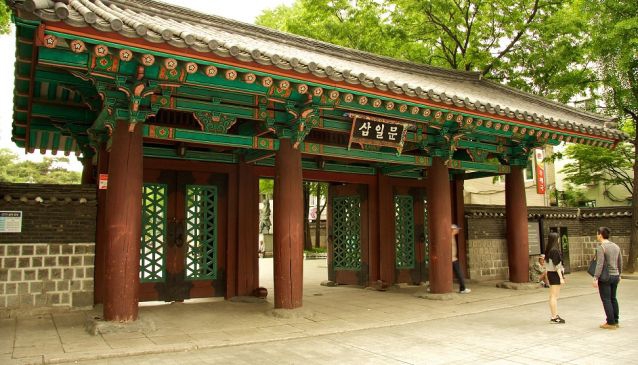
These generalizations of Gangnam and Gangbuk are subjective and should be regarded as a basic reference.
A typical conversation among Seoul residents often revolves around which side of the river they reside in: Gangnam or Gangbuk. Similar to the river Thames in London, the Han River directly flows through Seoul, dividing the city into two main areas, namely Gangnam and Gangbuk. We believe that the distinction between these two areas can be characterized as a clash between the old and the new.
The three kilometers surrounding City Hall and Gwanghwamun Gate, located north of the river, have experienced minimal Western and Postmodern influences. The hilly neighborhoods here have largely maintained their old-world charm and appear to be suspended in time. Among these neighborhoods, Bukchon Hanok Village near Samcheongdong stands out as the most popular, often serving as a popular filming location for television dramas. Furthermore, you will find traditional Seoul shopping streets and bustling outdoor markets north of the river, which truly exude the appeal of the old city.
The Gangbuk area is also home to five palaces situated in close proximity to one another, adding a palpable sense of Seoul's culture and history. Even the residents of Gangbuk seem more grounded and embrace the traditional aspects of Seoul. Outdoor stalls are a common sight here, with vendors frequently pushing their merchandise along the streets on carts.
This contrasts sharply with the vibrant urban landscape of the newer southern region of Seoul, primarily stretching from Gangnam Station to Samsung Station. This area is dominated by towering residential buildings, commercial structures, trendy nightlife, and upscale restaurants in Seoul. As recently as the 1970s, this part of Seoul was mostly farmland but has since become the most densely populated area in the city, adorned with dazzling neon lights and towering skyscrapers. One of the most prominent symbols of modern Seoul is Teheran Street, a broad ten-lane thoroughfare cutting through Gangnam and home to numerous major business groups and IT companies. Teheran Street, alongside parallel roads, showcases the splendor of contemporary Seoul, with its apartment complexes, local cafes, restaurants, bars, luxury cars lining the streets, and fashionable Seoulites engrossed in their smartphones while walking their dogs or enjoying an iced Americano. In Gangnam, you will come across many corporate employees, as well as a significant number of students intensely studying for exams, particularly in the Gangnam Station Area. This is Seoul at its liveliest, right on the cutting edge. The main street is adorned with digital media poles, with Samsung Electronics having its headquarters and showroom in this area, and the subway station boasting a futuristic design. Exciting promotional events are a constant occurrence here, and impressive neon signs are a common sight.
However, it should not be assumed that there are no bustling streets north of the river, such as Myeongdong, or tranquil spots in the south, such as Samneung Park. These generalizations of Gangnam and Gangbuk are personal observations and should be considered as a rough guide. Venture northward to explore the charm of Korean hanok houses, Seoul's museums, royal palaces, and traditional markets and shopping streets. Travel south to experience the digital cityscape, towering buildings, the latest trends, upscale shopping, and a fusion of Western and Asian influences.



